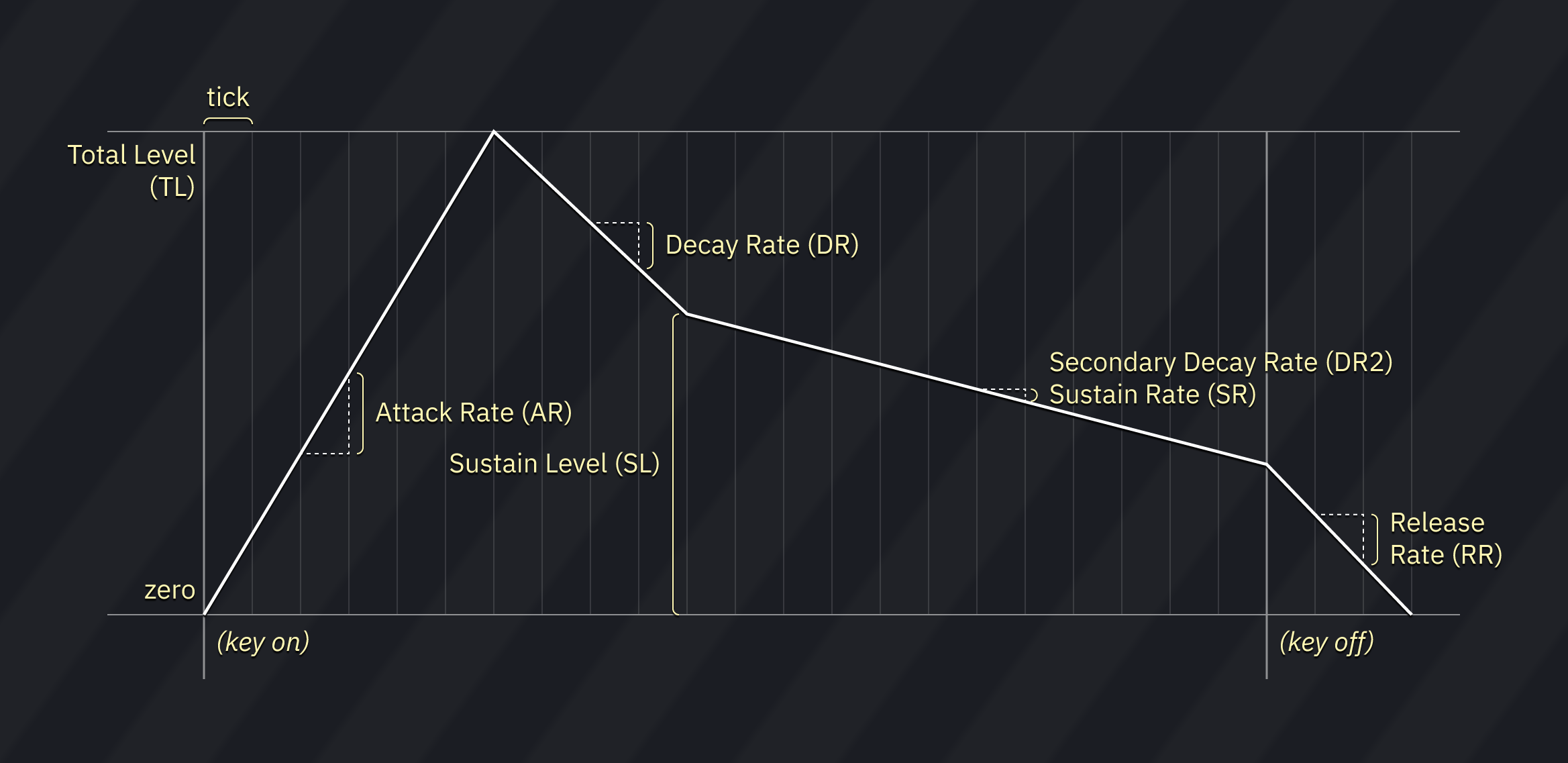mirror of
https://github.com/tildearrow/furnace.git
synced 2024-11-01 10:32:40 +00:00
3.3 KiB
3.3 KiB
OPLL FM synthesis instrument editor
The OPLL FM editor is divided into 5 tabs:
- FM: for controlling the basic parameters of FM sound source.
- Macros (FM): for macros controlling algorithm, waveform and feedback
- Macros (OP1): for macros controlling FM parameters of operator 1
- Macros (OP2): for macros controlling FM parameters of operator 2
- Macros: for miscellaneous macros controlling volume, arpeggio, and preset.
FM
The OPLL synthesizer is two-operator, meaning it takes two oscillators to produce a single sound.
These apply to the instrument as a whole:
- Feedback (FB): Determines how many times operator 1 returns its output to itself. (0-7 range)
- Sustain (SUS): enables the sustain flag (sets the release rate to 5)
- DC (half-sine carrier): Sets the waveform produced by carrier operator to half-sine
- DM (half-sine modulator): Sets the waveform produced by modulator operator to half-sine
To the right, there is a drop down menu for OPLL preset instrument selection.
These apply to each operator:
- The crossed-arrows button can be dragged to rearrange operators.
- The OP1, OP2 buttons enable or disable those operators.
- Amplitude Modulation (AM): Makes the operator affected by LFO tremolo.
- Envelope generator sustain flag (EGS): When enabled, value of Sustain Level is in effect.
- Attack Rate (AR): determines the rising time for the sound. The bigger the value, the faster the attack. (0-15 range)
- Decay Rate (DR): Determines the diminishing time for the sound. The higher the value, the shorter the decay. It's the initial amplitude decay rate. (0-15 range)
- Sustain Level (SL): Determines the point at which the sound ceases to decay and changes to a sound having a constant level. The sustain level is expressed as a fraction of the maximum level. (0-15 range)
- Release Rate (RR): Determines the rate at which the sound disappears after KEY-OFF. The higher the value, the shorter the release. (0-15 range)
- Total Level (TL): Represents the envelope’s highest amplitude, with 0 being the largest and 63 (decimal) the smallest. A change of one unit is about 0.75 dB.
- Envelope Scale (KSR): Also known as "Key Scale". Determines the degree to which the envelope execution speed increases according to the pitch.
- Frequency Multiplier (MULT): Determines the operator frequency in relation to the pitch. (0-10, 12, 15 range)
- Pitch Modulation (VIB): Makes the operator affected by LFO vibrato.
macros
Macros define the sequence of values passed to the given parameter. Via macro, along with the previously mentioned parameters, the following can be controlled:
FM Macros
All parameters are listed above.
OP1-OP4 Macros
All parameters are listed above.
Macros
- Arpeggio: Pitch change sequence in semitones.
- Patch: changes the playing preset mid-note
- Pitch: fine pitch.
- Relative: pitch changes are relative to the current pitch, not the note's base pitch.
- Phase Reset: Restarts all operators and resets the waveform to its start. Effectively the same as a
0Cxxretrigger.
links
FM instrument tutorial: A great starting point to learn how create and work with FM sounds. This was made for DefleMask, but all the same principles apply.
